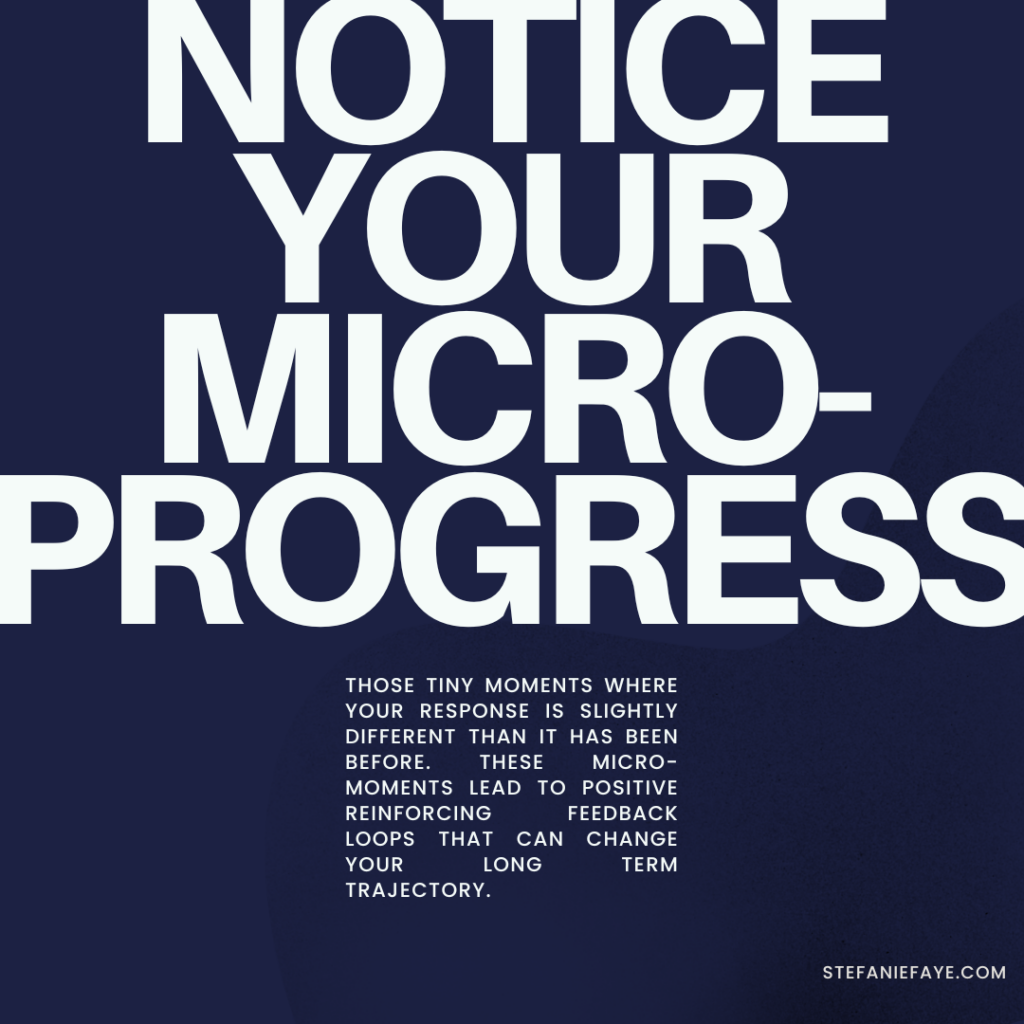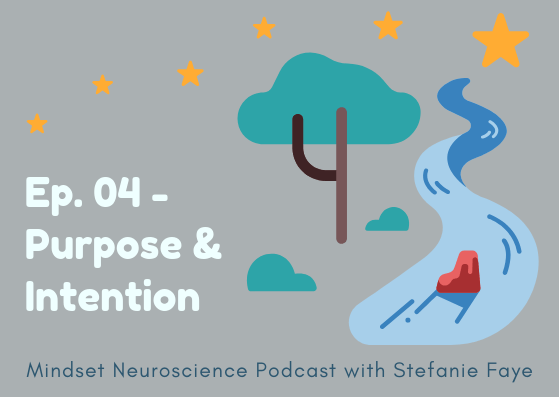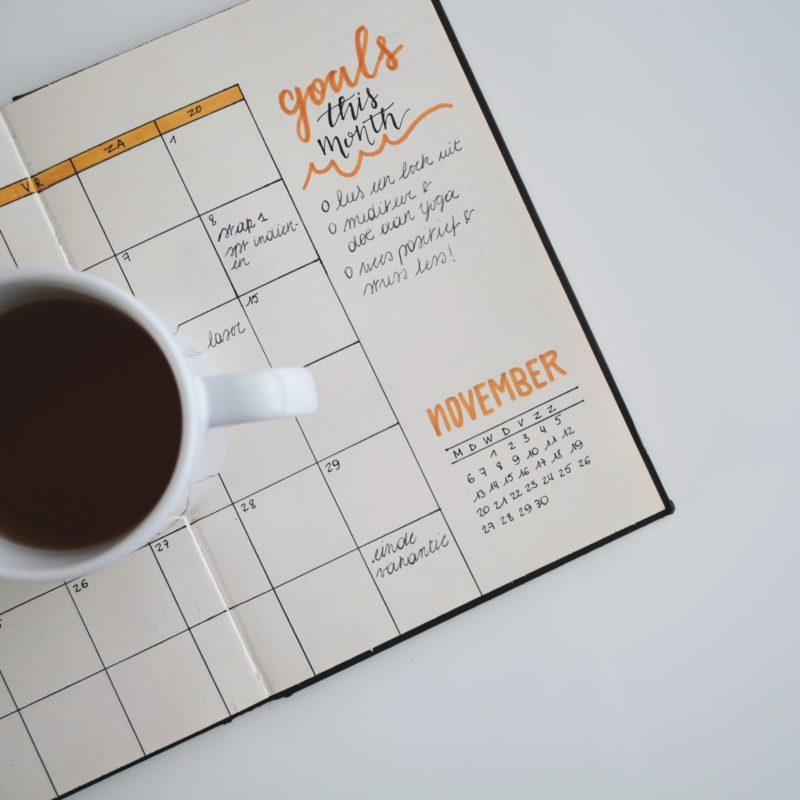Remember that as a complex adaptive system, you are an interactive work in progress.
Stay open to the possibility of your own growth - know that it happens in increments.
Notice micro-evolutions in yourself - those tiny moments where your response is slightly different than it has been before.

These micro-moments lead to positive reinforcing feedback loops that can change your long term trajectory.
Noticing your micro-progress more often helps you stay aware that the beauty of all of it is happening NOW.
“No single event can awaken within us a stranger whose existence we had never suspected. To live is to be slowly born.”
-Antoine de Saint-Exupéry, Flight To Arras
You are a dynamic process, capable of changing your trajectory while staying grounded in and learning from what is unfolding now.
Talking about, even "celebrating" mistakes is not enough for us to become less afraid of failure.
And it's not enough to help us learn anything new.
"Re-framing" mistakes is the first point of entry but it's only the beginning. You must create a track record of movement
The next step to push through a fear of mistakes and to actually create NEW behavior.... is to create a conscious record of surviving the discomfort and awkwardness that happens when we try to do something we've never done before.
The only way to build this record (aka., a conscious/explicit memory) is to intentionally engage in movement despite our nervousness or fear of failing.
By movement, I mean things like: movement of the body micro-movements of the vocal cords and diaphragm (speaking, singing), movement of fingers across a key board, hand gestures, movement of a paintbrush across a canvas, moving electrodes on a skull to collect new information, moving bits of data to create new combinations.
Sensorimotor mastery (automation) is needed
Sensorimotor = using the senses and motor functions/movement. ALL learning - no matter how old we are, starts with sensorimotor learning until it's mastered into a semiautomatic process*. Doing a movement enough times creates an efficient neural network - also called a 'schema' (similar to something computer programmers call a 'subroutine').
*For more on this, read Patricia McGuiness' book Why Our Children Can't Read, which is recommended by Stephen Pinker as "one of the most important books of the decade". She gives a fascinating review of how how backwards we teach reading to kids. For a critical review of her approach and a totally contradictory but also interesting point of view, read this New York Times Review),
A skill that's automatic uses fewer neurons and less glucose, so it feels like it takes much less effort.
Being 'better' at something means you are doing it more automatically. The better you get, the less of your brain is actively involved. (McGuinness, 1997)
When you start out a new skill, your brain will gobble up glucose, which will make you feel tired, awkward, and uncomfortable.
The more you move, the more automatic your movements get, the less glucose your brain will need, the easier it will feel.
Once that happens, you can focus more on adding your own 'flare' and complexity to it.
For example, when a child is learning to read - they need to master the sensorimotor movements of their eyes across the page,
and moving their mouth while saying (or mouthing) the words aloud to gain mastery. Once that is automatic, they can move onto processing meaning.
p.s. - SEEING is a MOTOR MOVEMENT: if our eyes didn't move, our brains wouldn't register that we are seeing anything.
LISTENING is a MOTOR MOVEMENT: our middle ear muscles tense and relax to hear either human voice or background sounds.
Make a new move, and then do it again and again
So...
If you want to learn something new (or help someone else learn something new), or be more creative - whether that means creating a new object, project, idea... or even creating a new relationship, or a change in your life on any level ....
You have to bring an idea from the interior (your mind) to the exterior.The only way to do this is you must initiate some new, intentional form of physical movement, however small or microscopic.
And you'll need to do it again and again until it's mastered on a sensorimotor level. When people think 'movement', they often think of more obvious forms.
But it can take the form of less obvious 'new movements'.
Here are examples:
- Moving a pen across the paper to express what you're thinking or tell a story.
- Moving your finger to pushing the submit, send, post or publish button.
- Moving your mouth and vocal cords to say something NEW so someone can hear it.
- Moving your lips, mouth and vocal cords to sing.
- Dancing.
- Walking.
- Say something you've never said.
- Smile at someone you've never smiled at.
- Shake the hand of someone you've never met.
- Share something about yourself you've never shared.
The key being, don't just think about doing or creating or saying something...
You need to actually get your body to make a movement it's never made before.
And then do it again and again.
Eventually, you'll have a track record of surviving the discomfort of doing something new. (Not pre-approved, not something you've done before. Something NEW).
You may never get over the feeling of nervousness (I haven't!!!) but having a history of surviving those feelings of anxiety can give you the guts to feel that fear and create anyway.
That's been my journey.
"The price of inaction is far greater than the cost of making a mistake."
- Meister Eckhart
#mindset #progress #presence #coaching #coaches #consultants #executivecoach


